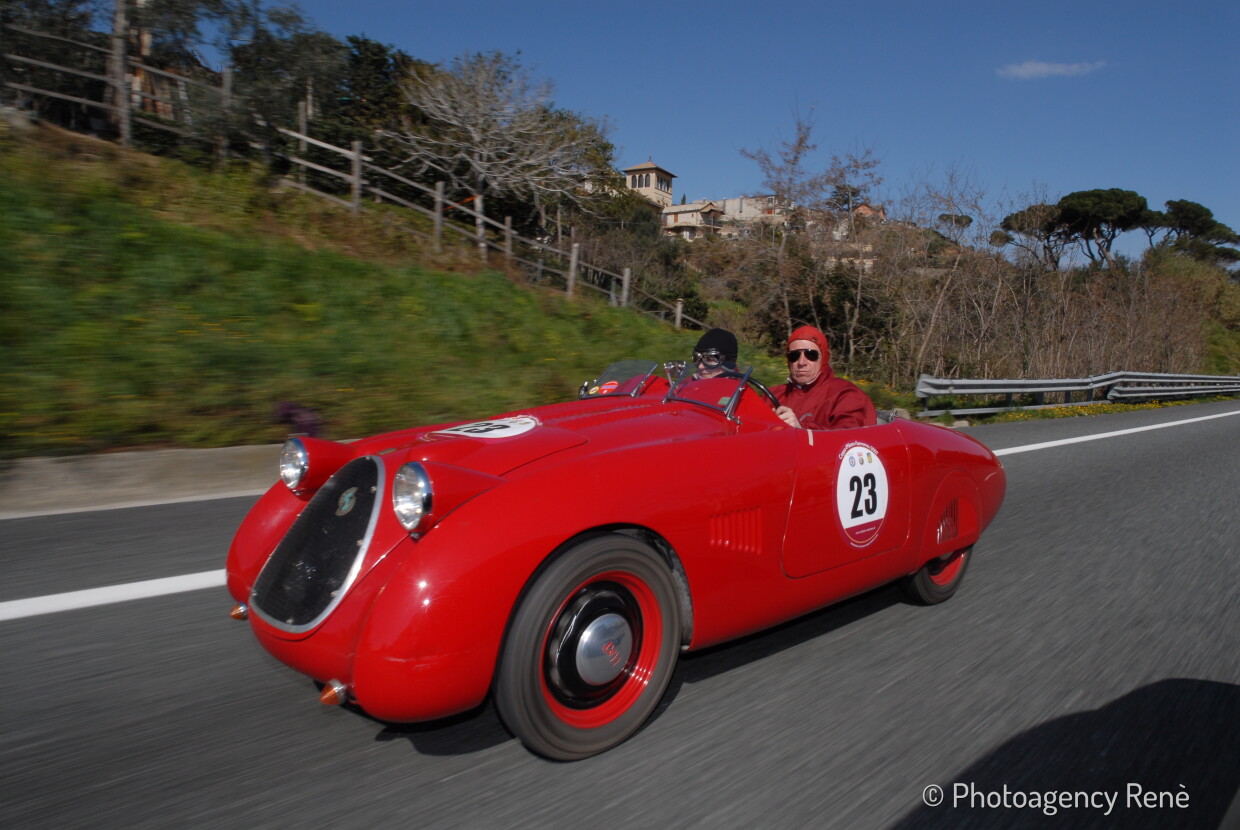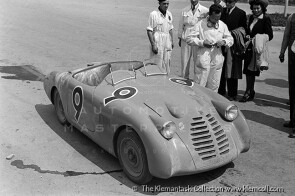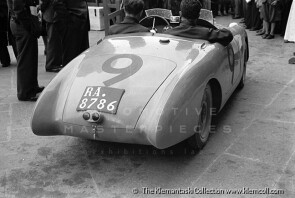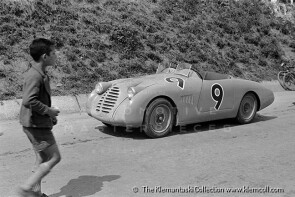
1939 Fiat 500 Siata Pescara
ON/OFF
Why am I an Automotive Masterpiece?
The little “Topolino” is one of the most reknown and iconic car, even beyond the cars’ world. Born in 1930s’, it was the vehicle of the Italian renaissance before that the postwar new models hit the roads. It’s the car that brought Italy from two wheels (with or without an engine) to four, it was a car meant to be essential and cheap, but it seems that anyone wanted to race it. The origins of the car are quite adventurous, in 1930 Benito Mussolini talked to Giovanni Agnelli, senator of the kingdom, about the imperative need of a low-cost car for the masses. It was a good idea for the “propaganda”, followed by the Germany of Adolf Hitler, where Ferdinand Porsche was suddenly called to build the Volkswagen, “the car for the people”. As the car should cost less than Lit. 5000, the task was arduous. FIAT chief designer Antonio Fessia turned the task to a young engineer he believed to be the right man for the job: Dante Giacosa. He scaled down the previous Balilla project simplifying anything, while the body lines were inspired by the FIAT 1500 with a smooth bonnet, good for airflow and visibility. The aeronautical experience of Giacosa inspired the lightened double rails chassis with the engine (a 569cc, 4-cylinder side-valve) cantilever mounted to improve space inside. Even before going into production, everyone named the car the “Topolino”, part for the size, part from the mouse-alike front, resembling the successful Walt Disney’s character Mickey Mouse: Topolino, in Italy. Howewer, the official name was FIAT 500, in order to comply with autarchy rules. The car was presented on June 10, 1936 at Villa Torlonia, and the price was of Lit. 8.900, higher than the goal of Lit. 5.000 and really high for a common worker, but the car sold anyway. The car evolved in the years. In 1938 the first technical changing: the “quarter” rear leafsprings (the so called “balestrino” or “balestra corta”) became standard half leafspings to improve the carrying capacity. FIAT 500 until 1948 are now called “500A”.
The Topolino was often modified, from mildly to radically, for the races. Workshop, body shops, small factories and artisans built their ultimate version. Some just cut the roof, someone else built barchetta roadsters on tubular chassis, while the engine grew up to the 750-cc category limit to the most possible power. At the Mille Miglia, for example, 95% of the 750 cc Sport cars were registered as Fiat, although the Turin-based company never built roadsters, barchette or racing coupés. S.I.A.T.A., founded in Turin in 1926 by Giorgio Ambrosini, grew in the orbit of Fiat supplying conversions and accessories for sporting use for the cars produced by the Turin-based company. Despite the fame achieved between the two wars, it is very difficult to trace the history of the company, as the special heads produced in Turin were used by many tuners to build their sports cars, which were generically referred to as S.I.A.T.A.; however, this only meant the origin of some mechanical details and not the origin of the assembled car; at the time, for the homologation of vehicles, if the craftsman was not included in the official list of manufacturers, the make of a car was mostly that of the chassis manufacturer (such as Fiat). Starting from 1937, the year of birth of the Turismo Nazionale category, the S.I.A.T.A. began marketing complete cars. The first, called Gran Sport, was a derivation of the Fiat 500 on which radical interventions had been made: the original side valve head had been replaced with the so-called "Supertesta Siata" with overhead valves and the displacement had been increased to 636 cc, thus developing 25 hp. The bodywork is also new, made by S.I.A.T.A. itself, which had incorporated Andrea Mantelli's Carrozzeria Italiana. It was a tapered and roundish two-seater barchetta. The car was fitted with all the accessories, from oversized brakes to the close-ratio gearbox, which S.I.A.T.A. used to sell separately. Despite Ambrosini's attempts to have the technical regulations of the Turismo Nazionale category modified, so as to allow the Gran Sport to be admitted among the normal Topolinos, the CSAI did not implement these requests, so the new barchetta was included in the Sport category and this limited its success. In 1938, the cylinder head was also liberalized in the regulations of the Sport Nazionale category, but the Fiat 500 derived from S.I.A.T.A., albeit lightened thanks to the new aluminum bodywork by Zagato, were beaten by those of specialists such as Stanguellini, who used the same S.IA.T.A. mechanics. In 1939 S.I.A.T.A. began producing a new small car for the class up to 750 cc in the Sport Nazionale category, available in two versions: an open one, called Pescara, and the other closed, called Monza. It was an evolution of the Gran Sport, equipped with an electric fuel pump, with a new aluminum S.I.A.T.A. bodywork. For the Pescara, powered by the engine rebored to the maximum permitted by the technical regulations, the manufacturer declared a top speed of about 130 km/h, thanks to 27 hp at 5000 rpm. The car therefore presented itself with all the weapons for its hard-fought category. The outbreak of World War II and the suspension of racing put an end to the development of the car, while S.I.A.T.A. had to reconvert to war production.
The 1939 Fiat 500 Siata Pescara with chassis no. 500*057183* was built in 1939. Demostrating the ingenuity of the Italian specialists, this sport barchetta was born from a rib of the Fiat Topolino. The car is bodied by Carrozzeria Siata, easily recognizable by the badge above the side air intakes. Fewer than 4 examples of the car are believed to have been assembled. It was sold to its first owner, the nobleman and gentleman driver “Rino” Fermiani, receiving its first Ravenna plate in April 1940. The first feat for the little Sport was the I Gran Premio Brescia delle Mille Miglia, a unique and special edition for that year on a closed circuit and the last edition of the red arrow before the war. The car raced with Fermiani himself at the wheel, together with Francesco Lama, but did not finish the race. The post-war period began with more luck: the car already presented itself in 1946 at the Circuito della Superba, where it was 4th in class with Pier Ugo Pirazzoli. In the years up to 1948 Fermiani, Pirazzoli and Zaniboni will alternate in the ownership of the car and in the driving of the car in different competitions. In 1948 the car went back to the Mille Miglia with a different, more open grille on the front, but this time too it has no luck. Since that year, the history of the owners, always in Italy, has been traced. In 1993 the car was again at the start of the Mille Miglia, this time re-enacting. Since then, the car has enjoyed intense participation in major historic car races and reached as far as Japan. The car nowadays sports the same livery as at the 1948 Mille Miglia.





